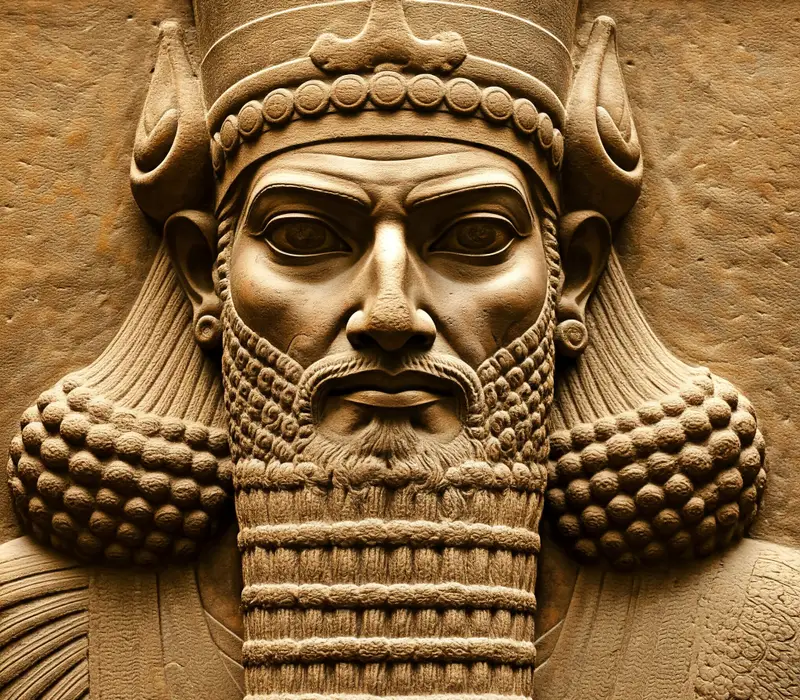The Timeless Art of Assyrian Bas-Relief Sculpture

The art of Assyrian bas-relief sculpture stands as a remarkable testament to the cultural and artistic achievements of ancient Mesopotamia. Emerging during the mid-fourth millennium BCE, this distinctive form of artistic expression highlights the profound connection between art, culture, and the religious and political life of the Assyrian empire. As travelers and art enthusiasts explore Iraq today, understanding the legacy of Assyrian sculpture becomes essential for appreciating the depth of the region’s historical narrative.
Historical Context and Origins of Assyrian Sculpture
Assyrian sculpture traces its origins back to the periods of early urbanization in Mesopotamia, particularly during the era resembling the ancient script. The art form gained prominence as city-states flourished, and the need for artistic representation in religious and royal contexts became more pronounced. The Assyrians, who ruled a vast empire from the 10th to the 7th centuries BCE, embraced sculpture not only as a decorative element but also as a means of conveying power and divine protection.
The bas-relief style, characterized by figures and scenes carved into a flat surface, became particularly significant during the Neo-Assyrian period. Artists employed techniques that allowed for intricate details while maintaining the structural integrity of the stone. The use of stone types, such as gypsum and alabaster, provided a medium that could be finely carved to produce realistic depictions of figures, animals, and mythical beings.
Materials and Techniques of Assyrian Sculptors
The craftsmanship of Assyrian sculptors is noteworthy for its technical precision and artistic vision. Initially, artisans would select blocks of stone and prepare them by leveling the surfaces with chisels and specialized tools. This meticulous process ensured a smooth canvas for further work. Once the surface was prepared, the artists would polish it by rubbing it with harder stones to achieve a fine finish.
A distinctive feature of Assyrian relief sculpture is the use of plaster to fill in any imperfections between stone pieces. This method not only enhanced the durability of the sculptures but also allowed for a seamless visual appearance. Once the foundational work was complete, artists would sketch outlines of the figures before carving them into the stone. The process involved careful planning, as each line and detail would contribute to the overall composition.
The Iconography of Assyrian Reliefs
One of the primary goals of Assyrian bas-relief sculpture was to convey narratives that reinforced the power of the king and the divine protection afforded to him. Many of the reliefs depict larger-than-life figures, often combining human and animal traits. A prominent example is the famous winged bull, or lamassu, which guarded the entrances of palaces and temples. These hybrid creatures symbolized strength and protection, serving as a spiritual barrier against malevolent forces.
Assyrian reliefs also commonly feature scenes of royal hunts, military conquests, and religious rituals. The kings are often portrayed in powerful poses, engaging in activities that highlight their might and divine favor. Despite the recurring themes, the artistic representation of these figures showcases a range of styles and nuances. Variations in clothing, headdresses, and attributes provide insight into the individuality of each character depicted, ensuring that no two representations are precisely the same.
Notable Examples of Assyrian Bas-Relief Sculpture
Among the most renowned examples of Assyrian bas-relief sculpture are the intricate carvings found in the palaces of Assyrian kings. The grand palaces of Nimrud, Nineveh, and Khorsabad served as significant artistic hubs, where sculptors created expansive murals that adorned the walls of these monumental structures. The detailed depictions of court life, warfare, and religious ceremonies are invaluable resources for understanding the societal norms and values of the time.
The reliefs at the Palace of Sargon II in Khorsabad provide a vivid portrayal of the king's military exploits. One striking scene depicts Sargon leading his chariot into battle, showcasing his valor and divine sanction. Similarly, the reliefs at the Palace of Ashurbanipal in Nineveh highlight the king's achievements in hunting lions, an act symbolizing his prowess and courage.
Cultural Significance and Preservation Efforts
The cultural significance of Assyrian bas-relief sculpture extends beyond its artistic merit. These artworks served as historical documents, recording the achievements and beliefs of a civilization that played a pivotal role in the development of human history. The narratives captured in the reliefs provide insights into the religious practices, political dynamics, and social structures of the Assyrian empire.
In recent years, the preservation of Assyrian artifacts has become a pressing concern, particularly in light of the challenges posed by conflict and looting in Iraq. International organizations and local authorities have undertaken efforts to safeguard these treasures, recognizing their importance as part of the world’s cultural heritage. Museums around the globe, especially in Europe and America, house many Assyrian artifacts, ensuring that they continue to educate and inspire future generations.
The artistry of Assyrian bas-relief sculpture encapsulates the richness of Mesopotamian heritage, offering a window into a world where art served as a means of communication, power, and spirituality. As travelers explore Iraq, they are encouraged to delve into the stories and craftsmanship behind these ancient works, appreciating not only their beauty but also their profound historical significance.
By understanding the nuances of Assyrian art, visitors can gain a deeper appreciation for the cultural legacy that continues to influence contemporary society. The enduring allure of Assyrian sculpture stands as a testament to the creativity and resilience of a civilization that has left an indelible mark on human history.